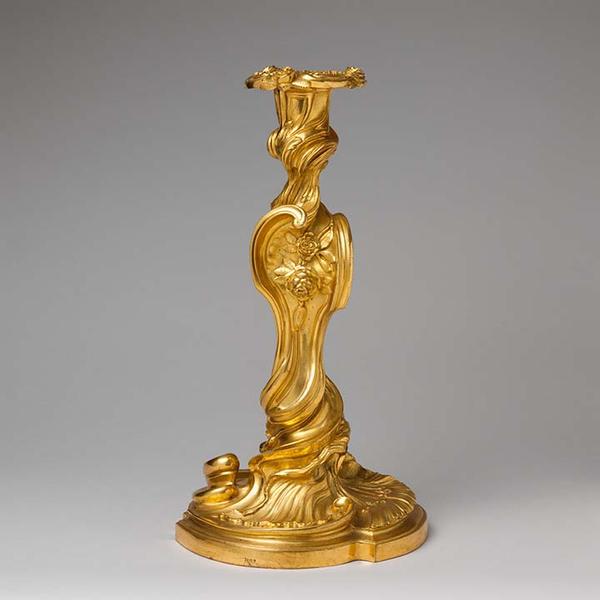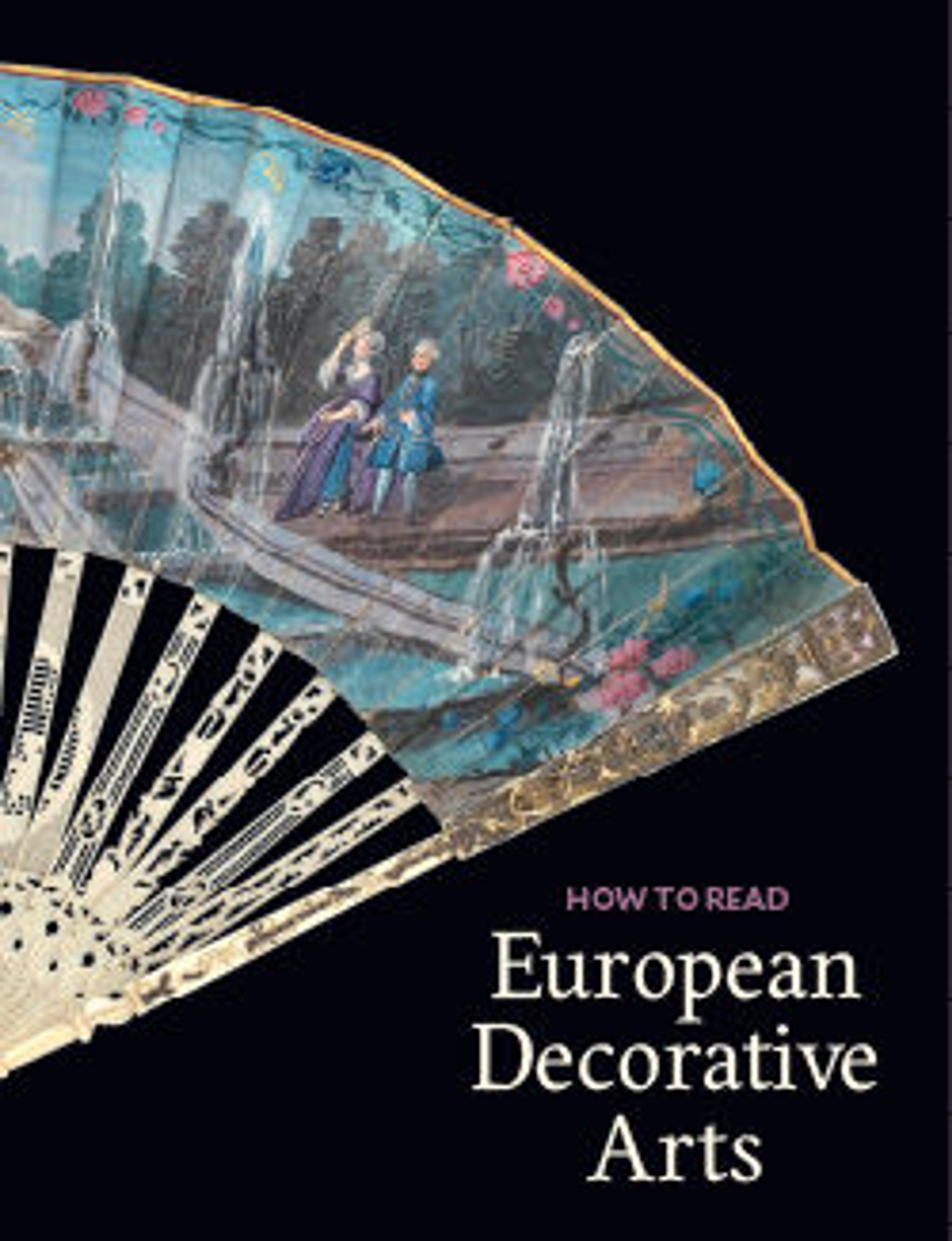Pair of candlesticks (flambeaux or chandeliers)
The exuberantly asymmetrical model for this candlestick was the work of Juste-Aurèle Meissonnier, one of the leading Rococo designers. Active also as architect, painter, and silversmith to Louis XV, Meissonnier rendered three drawings in order to show from all sides this candlestick with its loosely spiraling stem. The drawings were engraved by Gabriel Huquier (1695–1772) and published in Dousième Livre des oeuvres de J. A. Messonnier: Livre de chandeliers de sculpture en argent (1734–35). The design, incorporating shells, floral sprays, and even a butterfly in a whirlwind of motion, became very popular and was executed in both silver and gilt bronze. The quality of the chasing and gilding of this pair with its burnished and matte areas is outstanding.
Artwork Details
- Title: Pair of candlesticks (flambeaux or chandeliers)
- Designer: After designs by Juste Aurèle Meissonnier (French, Turin 1695–1750 Paris)
- Date: 1735–50
- Culture: French, Paris
- Medium: Gilt bronze
- Dimensions: .1 confirmed: 12 1/8 × 7 3/8 × 7 3/8 in., 93.466oz. (30.8 × 18.7 × 18.7 cm, 2650g)
.2 confirmed: 12 1/8 × 7 3/8 × 7 3/8 in., 112.864oz. (30.8 × 18.7 × 18.7 cm, 3200g) - Classification: Metalwork-Gilt Bronze
- Credit Line: Gift of Mrs. Charles Wrightsman, 1999
- Object Number: 1999.370.1a, b, .2a, b
- Curatorial Department: European Sculpture and Decorative Arts
Audio

2327. Candlesticks and Lumiere
Inspiring Walt Disney
PAIGE O'HARA:
The candlesticks in this case were designed by Juste Aurèle Meissonnier, an extravagant innovator of the Rococo style. Meissonier was trained as a goldsmith, but spent his career providing drawings for objects that others produced.
Curator Wolf Burchard on the rotating candlestick:
WOLF BURCHARD:
Meissonier was probably the most important Rococo figure in 18th century France. He produced a great number of designs that were spread across Europe and then copied in various media--gilt bronze, silver, and porcelain. The candlestick we’re looking at here is almost like an abstract sculpture of C- curves and S- curves and undulations creating a strong sense of movement as our eye is led across that very complicated surface. That is a different kind of animation, if you will.
PAIGE O'HARA:
The character called Lumiere, meaning “light” in French, is a cheerful romantic and Rococo candlesticks served as a visual source for his development. Movement, which was so important to Meissonier, was also central to Lumiere’s flamboyant personality.
DON HAHN:
When you look at a candelabra, it does have a head and arms. So there is a little anthropomorphic basis for turning that into some sort of creature. And to take that to its ridiculous conclusion, which is our job as cartoonists, and imagine all the characteristics that that might have, that if you were a living object and your hands were always on fire and your head was always on fire, what would that mean? If you could blow out your hands, but they would always re-light, and you were a hopeless romantic. All those things started to add up to be Lumiere.
More Artwork
Research Resources
The Met provides unparalleled resources for research and welcomes an international community of students and scholars. The Met's Open Access API is where creators and researchers can connect to the The Met collection. Open Access data and public domain images are available for unrestricted commercial and noncommercial use without permission or fee.
To request images under copyright and other restrictions, please use this Image Request form.
Feedback
We continue to research and examine historical and cultural context for objects in The Met collection. If you have comments or questions about this object record, please complete and submit this form. The Museum looks forward to receiving your comments.
